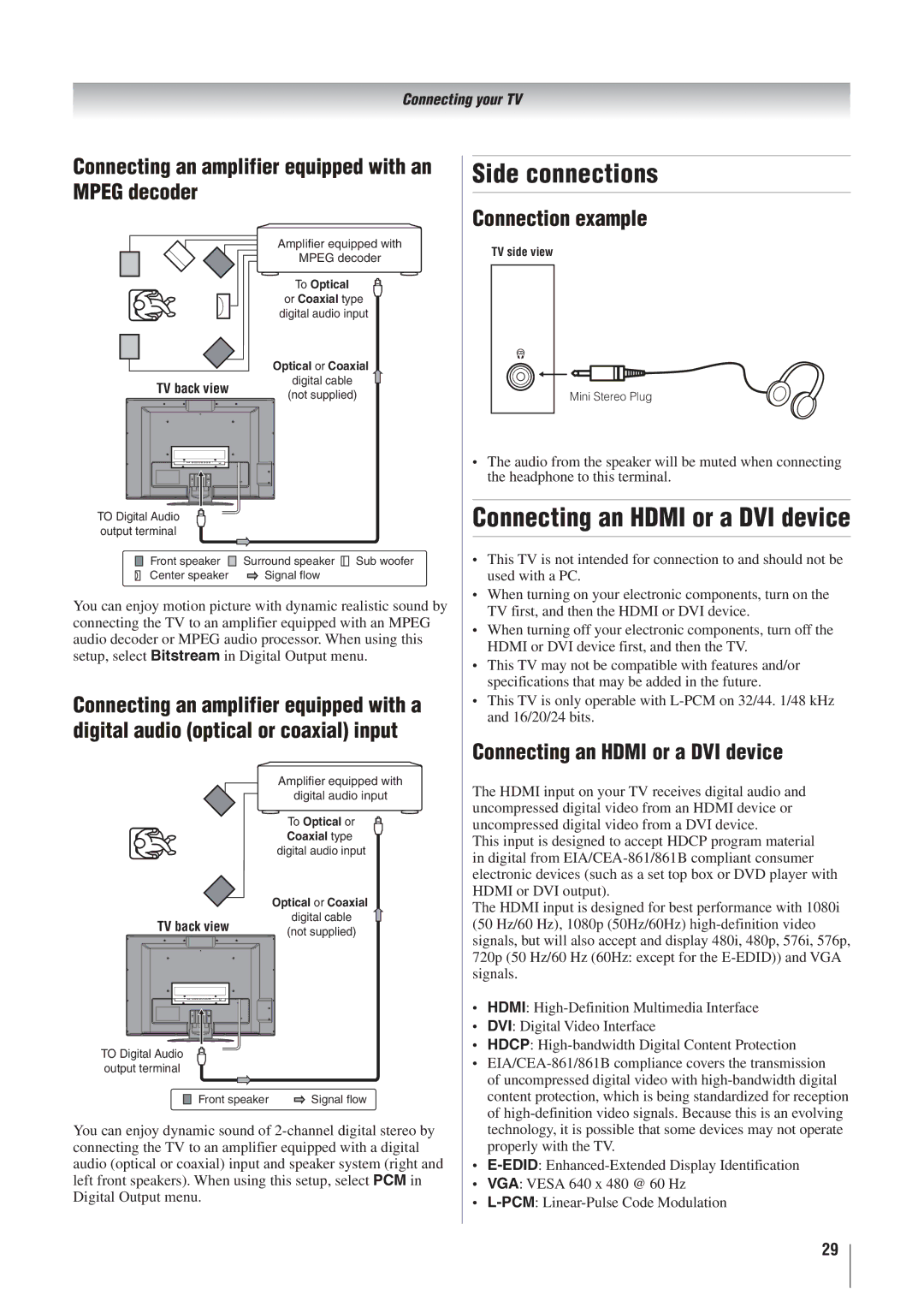
Connecting your TV
Connecting an amplifier equipped with an MPEG decoder
| Amplifier equipped with | |
| MPEG decoder | |
| To Optical | |
| or Coaxial type | |
| digital audio input | |
| Optical or Coaxial | |
TV back view | digital cable | |
(not supplied) | ||
|
TO Digital Audio output terminal
Front speaker |
| Surround speaker | Sub woofer |
Center speaker | Signal flow |
| |
You can enjoy motion picture with dynamic realistic sound by connecting the TV to an amplifier equipped with an MPEG audio decoder or MPEG audio processor. When using this setup, select Bitstream in Digital Output menu.
Connecting an amplifier equipped with a digital audio (optical or coaxial) input
| Amplifier equipped with | |
| digital audio input | |
| To Optical or | |
| Coaxial type | |
| digital audio input | |
| Optical or Coaxial | |
TV back view | digital cable | |
(not supplied) | ||
|
TO Digital Audio output terminal
Front speaker | Signal flow |
You can enjoy dynamic sound of
Side connections
Connection example
TV side view
Mini Stereo Plug
•The audio from the speaker will be muted when connecting the headphone to this terminal.
Connecting an HDMI or a DVI device
•This TV is not intended for connection to and should not be used with a PC.
•When turning on your electronic components, turn on the TV first, and then the HDMI or DVI device.
•When turning off your electronic components, turn off the HDMI or DVI device first, and then the TV.
•This TV may not be compatible with features and/or specifications that may be added in the future.
•This TV is only operable with
Connecting an HDMI or a DVI device
The HDMI input on your TV receives digital audio and uncompressed digital video from an HDMI device or uncompressed digital video from a DVI device.
This input is designed to accept HDCP program material in digital from
The HDMI input is designed for best performance with 1080i (50 Hz/60 Hz), 1080p (50Hz/60Hz)
•HDMI:
•DVI: Digital Video Interface
•HDCP:
•
•
•VGA: VESA 640 x 480 @ 60 Hz
•
29
